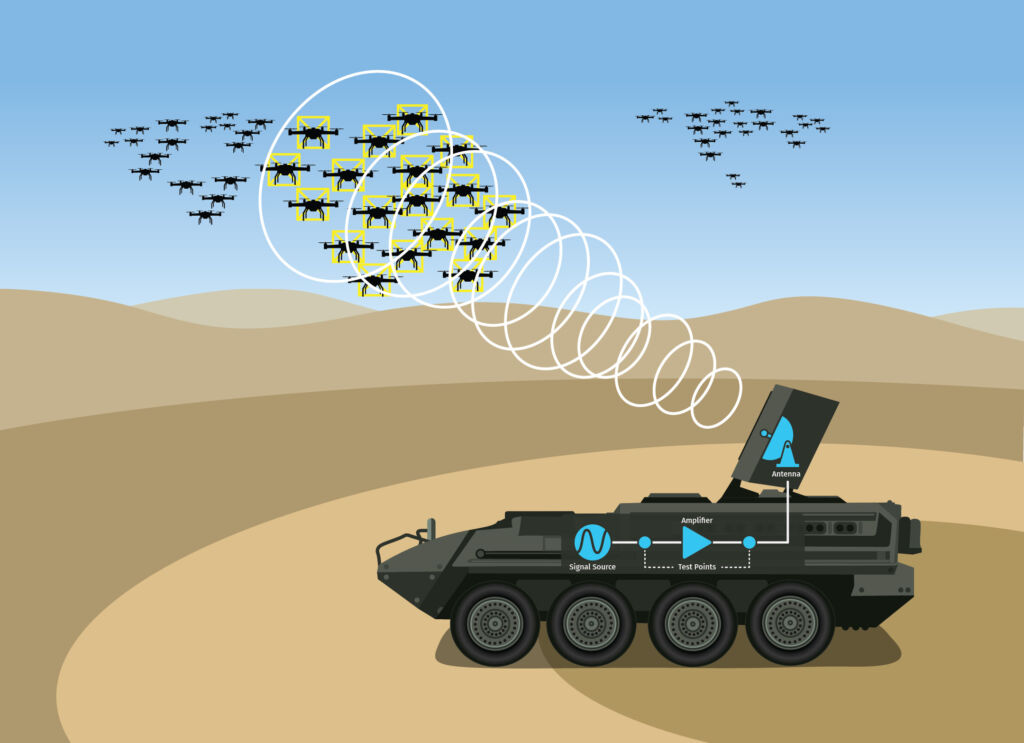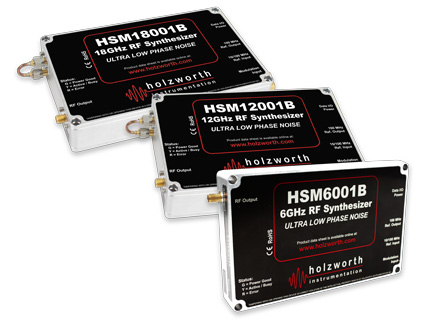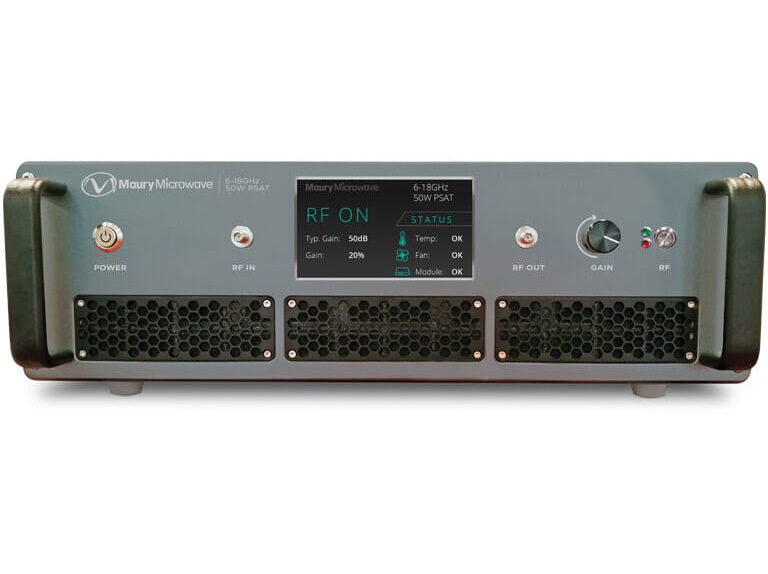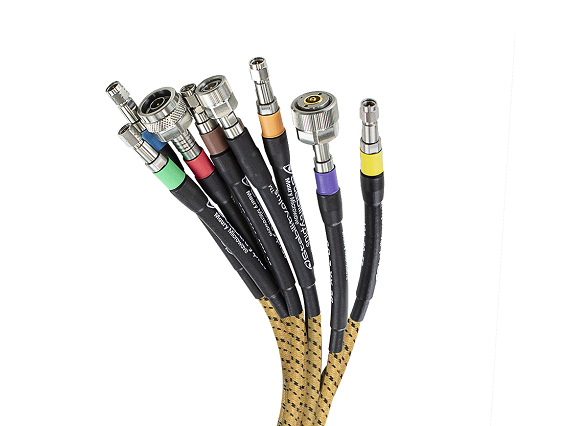When an electronic threat is identified, high-power microwave (HPM) pulses can be used to shut down or destroy a target’s most essential systems. Achieving this level of performance requires advanced performance across signal generation, amplification, routing, transmission, and analysis.
This post reviews key components and test points in the HPM signal path, highlighting the specialized capabilities required to ensure each pulse delivers maximum effect under dynamic combat conditions.
The HPM Signal Path
The illustration below gives a look at how an HPM system functions and how its performance is tested and validated. From signal generation and amplification to measurement and analysis, each stage is critical in executing single- and multi-target engagement operations effectively, such as neutralizing hostile drones.

Signal Generation: Creating the Pulse
The signal path begins with a precision synthesizer to generate the waveform, whether pulsed or continuous wave (CW), with tight control over frequency, phase, and timing.
Capabilities that define high-performance signal generation:
Low phase noise keeps the waveform spectrally pure by minimizing unwanted, random phase fluctuations and ensuring a beam that is tightly concentrated. Excessive phase noise, on the other hand, causes spectral spreading that reduces peak power and the energy delivered to the target.
Fine phase control enables precise signal alignment and synchronization across multiple transmitters, which is critical for maintaining beam coherence.
Fast frequency switching supports agile testing and frequency hopping, allowing engineers to simulate complex battlefield conditions and electronic countermeasures.
Signal Amplification: Delivering the Power
The next stage involves the signal passing through a high-power amplifier that increases amplitude while preserving the integrity of the waveform.
Essential amplifier characteristics for HPM systems:
- High output power provides the energy required for HPM antennas to radiate electromagnetic fields at mission-level intensities.
- Linear performance ensures the amplifier reproduces the input HPM waveform accurately at higher power levels, without introducing distortions. Linearity ensures predictable and repeatable power delivery and beam fidelity.
- Broadband performance supports consistent performance across a wide range of frequencies, which is required to operate in dynamic and frequency-agile operations.
Power Measurements: Capturing Real-time Performance
Two test points placed at the amplifier’s input and output capture real-time data to assess key metrics such as return loss and antenna gain, validating that power is delivered, focused effectively. These measurements also confirm waveform fidelity to ensure the integrity of the pulse shape is maintained. In test situations, power measurements help engineers understand what is being delivered to the target, allowing comparison between the intended waveform and what the target actually “sees.”
Key peak power sensor capabilities:
- Wide video bandwidth (VBW) captures fast, high-frequency pulse transitions without distortion, ensuring the complete waveform is measured.
- Fast rise time resolves rapid pulse edges, revealing phenomena such as overshoot, droop, or settling that can affect timing and performance.
- Fast measurement speed enables the quick capture of pulsed or transient events, allowing engineers to observe system behavior in real time.
Interconnects: Maintain Amplitude and Phase Stability
RF cables and interconnects connect every stage of the HPM signal path, routing and transferring energy from one component to the next. These connections must deliver consistent performance even in extreme conditions to maintain measurement accuracy.
Features required for reliable HPM connections:
- Amplitude and phase stability maintain consistent signal characteristics in demanding environments where cables are flexed, bent, crushed, and exposed to variations in temperature.
- Mechanical durability withstands repeated connections, movement, environmental stress without degrading performance.
- Measurement repeatability ensures consistent results across multiple tests and setups.
Building and Deploying Reliable HPM Systems
By stressing, testing, and validating each stage of the signal path, engineers can verify that HPM technologies will deliver focused, reliable energy and perform as expected under the intense demands of combat.





